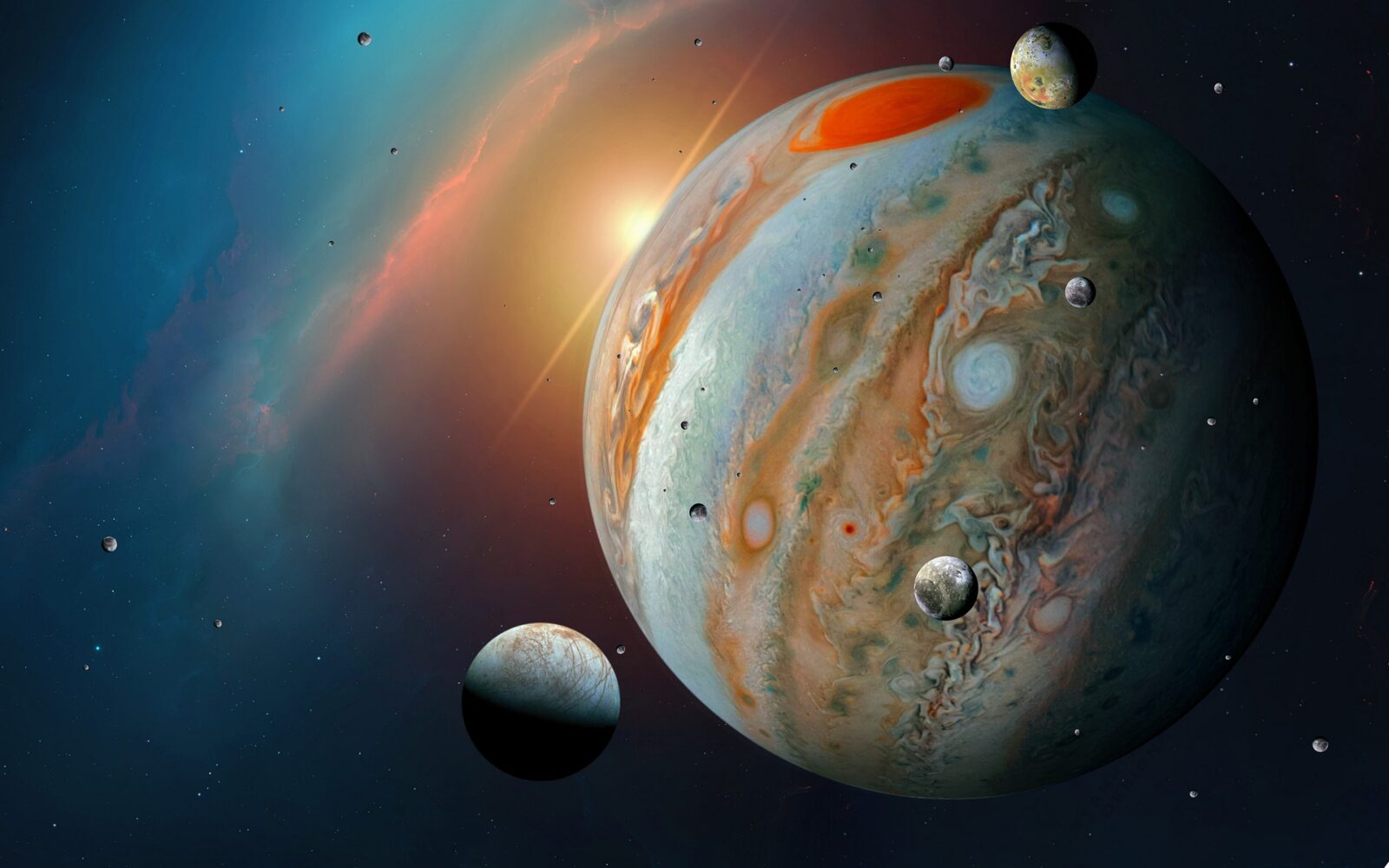All four giant planets from our Solar System (Saturn, Jupiter, Uranus, and Neptune) have some level of ‘rings,’ meaning debris from comets, asteroids, shattered moons, etc. If you’re at least a bit interested in astronomy, you know very well that Saturn has the most prominent rings of the four giant planets.
But surely it’s a bit weird that Jupiter’s rings are much fainter than those of Saturn, considering that the former planet is significantly larger. If you’ve been thinking about the same aspect, so did scientists. They might now have the needed explanation.
Jupiter’s moons might be to blame
Jupiter has far more moons than Earth has. Astronomers have discovered 79 such cosmic bodies revolving around the gas giant so far. Some of those moons are even incredibly big – Ganymede, for instance, is well-known by astronomers to be even bigger than Mercury, the first planet from the Sun.
The new theory that makes the subject of this article is that Jupiter’s moons are to blame for the planet itself lacking rings that are prominent enough, according to a new study that will be published in the journal Planetary Science.
Stephen Kane, the lead author of the study, said in a press release:
We found that the Galilean moons of Jupiter, one of which is the largest moon in our solar system, would very quickly destroy any large rings that might form,
As a result, it is unlikely that Jupiter had large rings at any point in its past.
The scientists involved in the study simulated Jupiter’s orbit and four of its moons. Thus, they discovered that the moons are able to exert enough gravitational pull to eliminate shards of ice from the planet’s orbit.
Jupiter is the biggest planet in our Solar System – it’s so huge that 1,300 planets the size of Earth would fit inside of it.












Leave a Reply